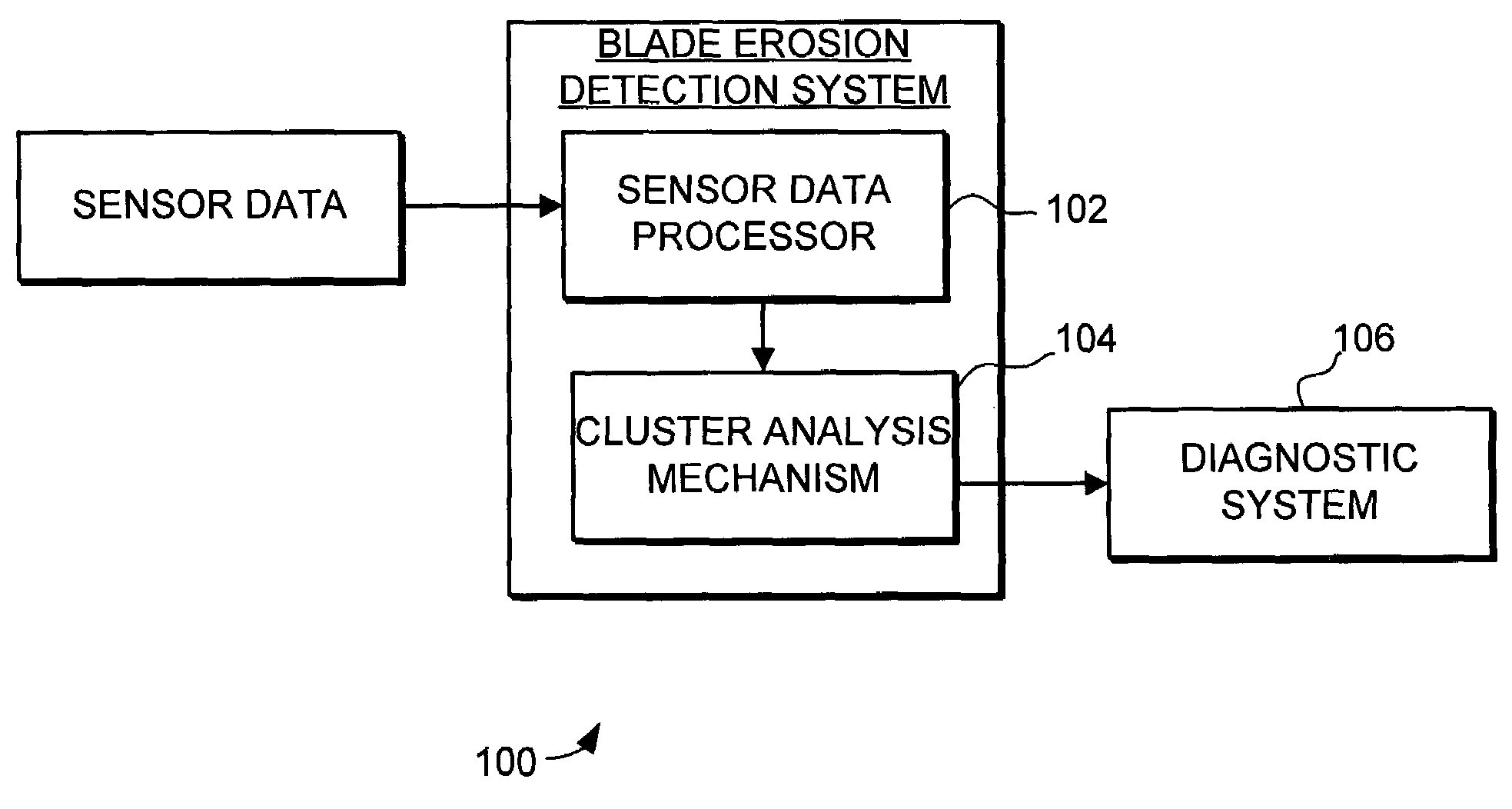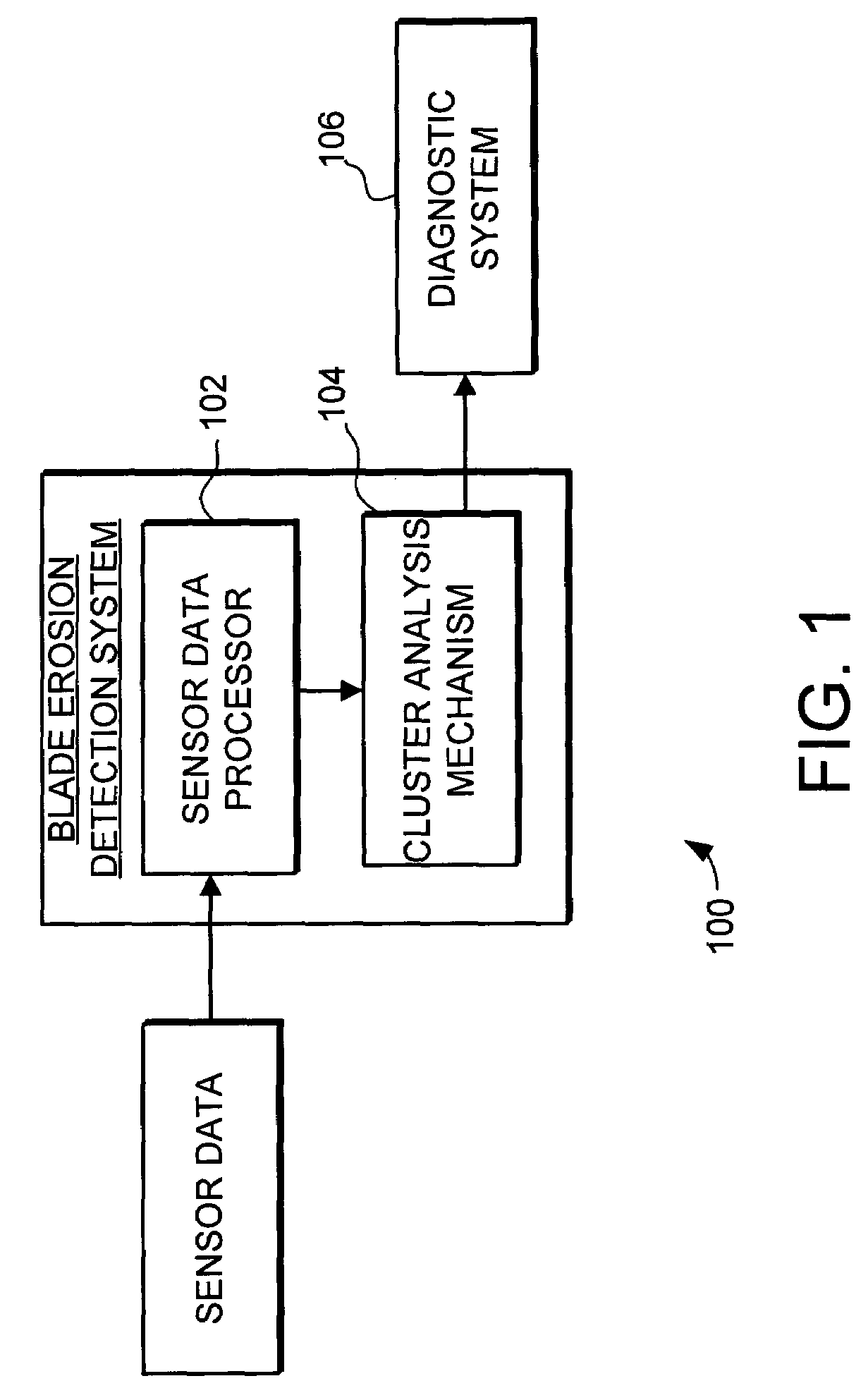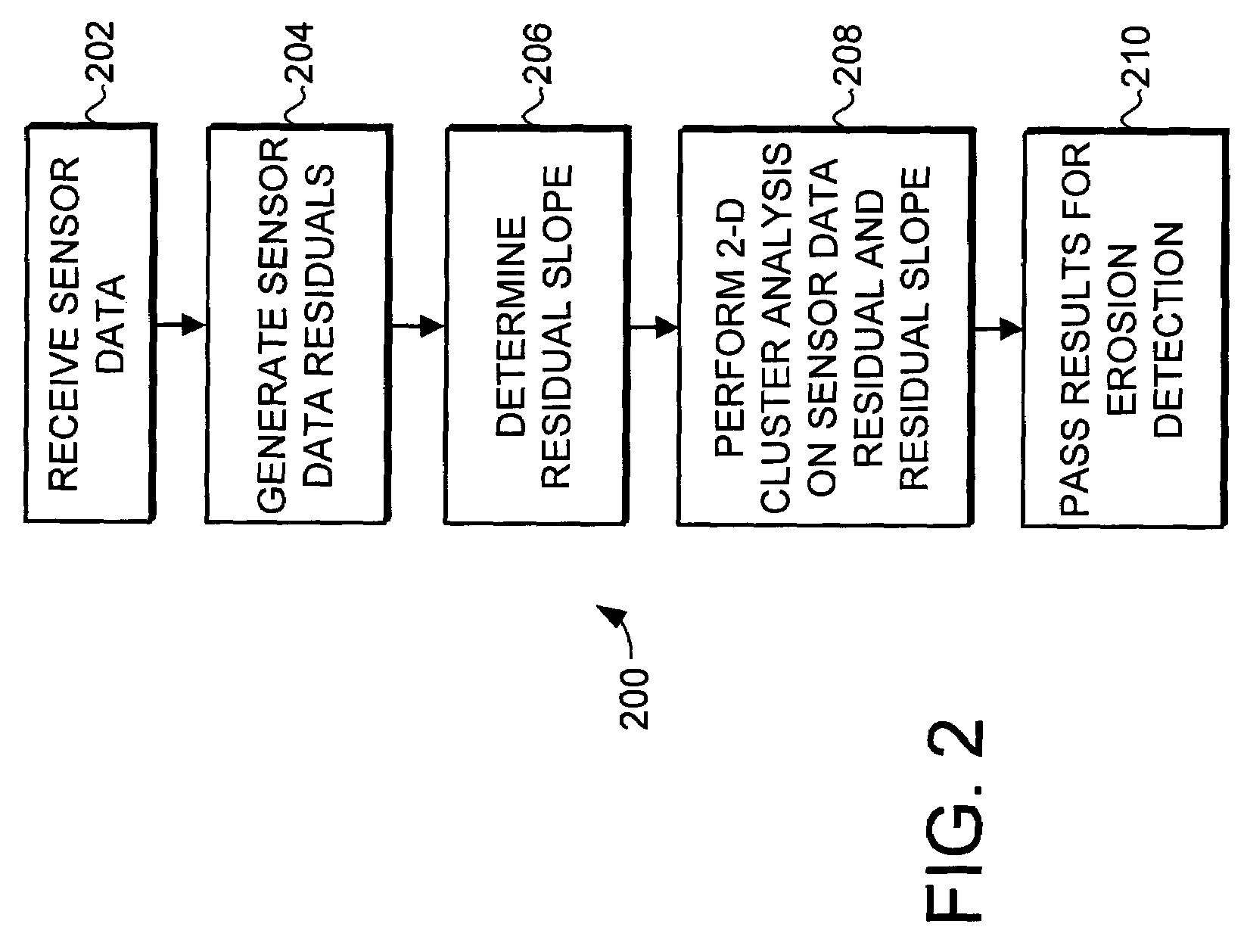Clustering system and method for blade erosion detection
a clustering system and blade erosion technology, applied in the direction of machines/engines, nuclear elements, using mechanical means, etc., can solve the problems of increasing the need for automatic prognosis and fault detection systems, increasing the complexity of modern aircraft, and exceeding complexity of modern mechanical systems
- Summary
- Abstract
- Description
- Claims
- Application Information
AI Technical Summary
Benefits of technology
Problems solved by technology
Method used
Image
Examples
Embodiment Construction
[0017]The present invention provides a system and method for detecting erosion in turbine engine blades. The system and method uses a cluster analysis technique on engine sensor data to determine a probability of blade erosion in compressor blades.
[0018]Turning now to FIG. 1, an exemplary blade erosion detection system 100 is illustrated schematically. The blade erosion detection system 100 includes a sensor data processor 102 and a cluster analysis mechanism 104. The sensor data processor 102 receives engine sensor data, including exhaust gas temperature (EGT) data, and augments the sensor data to determine sensor data residual values and the rate of change of the sensor data residual values. The augmented sensor data is passed to the cluster analysis mechanism 104. The cluster analysis mechanism 104 analyzes the augmented sensor data to determine the likelihood that turbine blade erosion has occurred. Specifically, the cluster analysis mechanism 104 performs a 2-tuple cluster feat...
PUM
 Login to View More
Login to View More Abstract
Description
Claims
Application Information
 Login to View More
Login to View More - R&D
- Intellectual Property
- Life Sciences
- Materials
- Tech Scout
- Unparalleled Data Quality
- Higher Quality Content
- 60% Fewer Hallucinations
Browse by: Latest US Patents, China's latest patents, Technical Efficacy Thesaurus, Application Domain, Technology Topic, Popular Technical Reports.
© 2025 PatSnap. All rights reserved.Legal|Privacy policy|Modern Slavery Act Transparency Statement|Sitemap|About US| Contact US: help@patsnap.com



